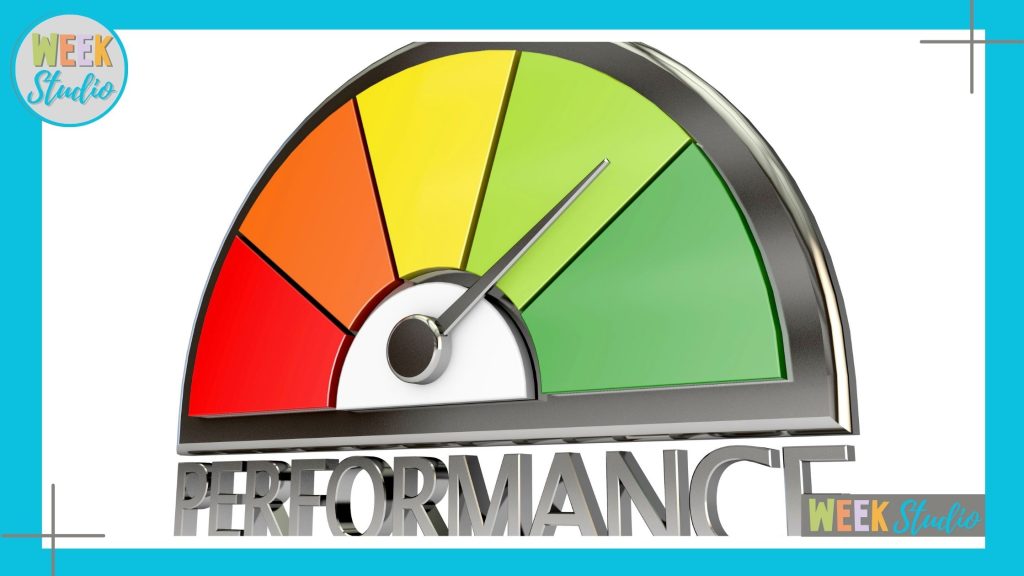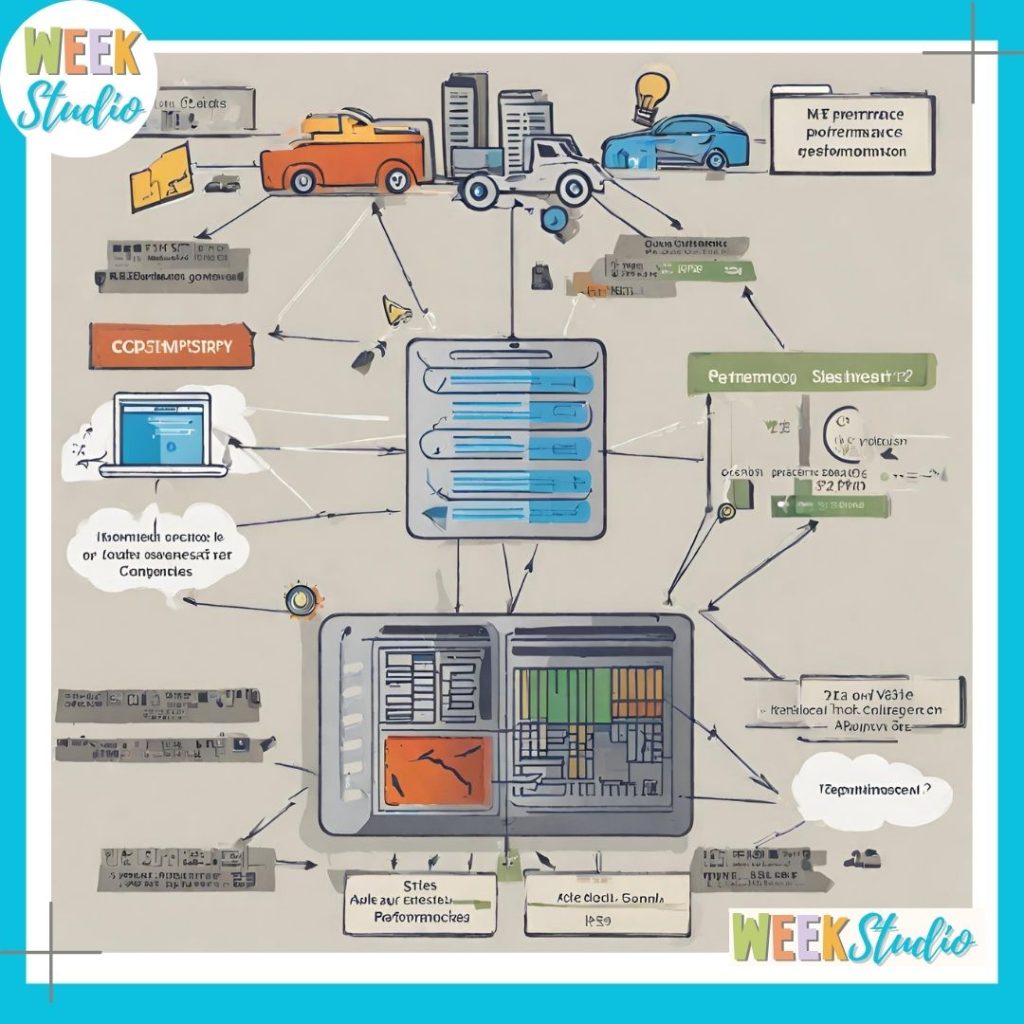Welcome to WEEK STUDIO, Whether you’re a business owner, a blogger, or simply a web enthusiast, you’ve probably heard the term “Site Performance Optimization” thrown around. But what exactly does it mean, and why is it so crucial? In this article, we’ll delve into the intricacies of Site Performance Optimization, explaining its importance, factors that affect it, and how to excel in this vital aspect of your online presence. Imagine you’ve stumbled upon a website that takes ages to load. Frustrating, right? That’s where Site Performance Optimization comes into play. It’s all about making your website faster, more user-friendly, and responsive across various devices.
What Is Website Performance Optimization?

Website performance optimization is the practice of making your website faster and more efficient. This can be done through a variety of methods, including optimizing your code, reducing the size of your files, and improving your server configuration. By improving your website’s performance, you can make it faster for your users and improve their overall experience. There are a number of different factors that you can optimize to improve your website’s performance. Here are some of the most important:
Code Optimization
One of the best ways to optimize your code is to use a code compressor. A code compressor will reduce the size of your code by removing any unnecessary whitespace and comments. It will also compress your code, which will make it take up less space on your server. This can improve performance, as it will take less time for your pages to load. There are a number of different code compressors available, including YUI Compressor, Google Closure Compiler, and JSMin. Each of these compressors has its own strengths and weaknesses, so you may want to try out a few of them to see which one works best for you.
Once you have compressed your code, you can then minify it. Minification removes any unneeded characters from your code, such as whitespace and comments. This can reduce the size of your code by up to 50%, which can improve performance. There are a number of different minification tools available, including UglifyJS, Google Closure Compiler, and JSMin. Again, you may want to try out a few of them to see which one works best for you.
File Optimization

Another important aspect of website performance optimization is file optimization. This involves optimizing your files for speed and reducing their size. You can do this by compressing your files with gzip compression, concatenating your files, and using the right file formats. Gzip compression is a compression algorithm that compresses files to a fraction of their original size. This can be done in your web server’s configuration, or you can use a tool like gzip.io to compress your files on the fly.
Concatenating your files means combining them into one file, which can be done with a tool like concat.js. This can help reduce the number of requests your website makes to the server, and it can also improve performance because the browser can cache the combined file.The right file formats can also help improve website performance. For example, using the JPEG file format for images can help reduce their size, while using the GIF file format can help improve performance.
Image Optimization

is a process that can be used to improve the performance of a website by decreasing the size of the images that are displayed on the page. This is accomplished by optimizing the images for the web, which can be done using a variety of software programs. You can do this by compressing your images, using the right file formats, and reducing the number of images on your pages. Compressing Images One way to optimize your images is to compress them. This will reduce their file size, which will improve page load times. You can use a variety of tools to compress your images, such as Photoshop, ImageOptim, and Kraken.
- GIMP is a free program that is very versatile and can be used to optimize both photos and graphics. However, it is not as user-friendly as Photoshop and can be difficult to learn how to use.
- ImageOptim is a free program that is designed specifically for optimizing images. It is very user-friendly and easy to learn how to use. However, it is not as versatile as Photoshop and GIMP.
Using the Right File Formats Another way to optimize your images is to use the right file formats. Some formats are better for speed than others. For example, JPEGs are a good format for images with lots of colors and details, while PNGs are a good format for images with few colors and details. Reducing the Number of Images Another way to optimize your images is to reduce the number of images on your pages. This will reduce the amount of data that needs to be downloaded, which will improve page load times. You can do this by combining multiple images into a single image, using sprites, and using lazy loading.
CSS Optimization

This involves optimizing your CSS code for speed and reducing its size. You can do this by minifying your CSS code, compressing your files, and reducing the number of CSS files on your pages. Minifying your code removes all the unnecessary data from your files, such as white space, comment tags, and line breaks. This can reduce the size of your files by up to 50%. Compressing your files uses a compression algorithm to further reduce the size of your files. Reducing the number of CSS files on your pages can improve the page load time by up to 50%.
There are a number of different tools and services that can help you optimize your CSS code. Minify, compress, and combine your CSS files with the YUI Compressor. Use the Google PageSpeed Insights tool to measure the page load time and optimize your CSS code.
JavaScript Optimization
Minifying your code is the process of removing all unnecessary characters from your code, such as whitespace, comments, and newlines. This can reduce the size of your code by up to 50%. Compressing your files is the process of reducing the number of bytes in your files by using compression algorithms. This can reduce the size of your files by up to 70%. Reducing the number of JavaScript files on your pages can reduce the number of HTTP requests made to your server, which can improve the speed of your pages.
There are a number of tools and services that can help you optimize your JavaScript code. The YUI Compressor is a free Java-based tool that can minify and compress your code. The Google PageSpeed Insights tool can help you identify opportunities to reduce the size of your JavaScript files. The Google Closure Compiler is a free tool that can minify, compress, and optimize your JavaScript code.
What Is Performance Optimization?
Performance optimization is the process of improving the performance of a system by modifying its components to increase the throughput, decrease the response time, or both. The ultimate goal of performance optimization is to make the system more efficient and faster. There are many techniques that can be used for performance optimization, such as reducing the number of CPU cycles required to complete a task, caching data in memory, and parallelizing tasks. In order to achieve the best possible performance, it is important to understand how the system works and how the different components interact with each other.
Performance optimization is an important task, and it is important to be aware of the different techniques that can be used to improve the performance of a system. By using the right techniques, you can make your system faster and more efficient.
What Is The Meaning Of Site Performance?
Site performance is the speed at which your website loads. This is an important factor to consider when designing and developing your website because a slow website can frustrate and anger your visitors, causing them to leave your site before they even have a chance to look around. Additionally, a slow website can have a negative impact on your search engine rankings.
There are a number of factors that can affect your website’s performance, including the size of your website, the number of files it contains, the type of files it contains, the server it’s hosted on, and the network it’s hosted on.
There are a number of things you can do to improve your website’s performance, including optimizing your images, reducing the size of your files, and using a content delivery network. You can also improve the performance of your website by choosing the right web hosting company and by optimizing your website’s code.
Why Is Website Performance Optimization Important?

Websites are often the first impression that a customer has of a company. If a website is slow to load, customers will be frustrated and are likely to leave the website. Additionally, website performance is a factor that is considered by search engines when ranking websites. Google has indicated that website performance is a factor that they use to rank websites.
There are a number of ways to improve website performance. One way is to optimize images. Another way is to use a content delivery network (CDN). A CDN is a network of servers that are used to store copies of websites. When a customer visits a website, the CDN will send the website from the server that is closest to the customer. Another way to improve website performance is to use a caching plugin. A caching plugin will store a copy of the website on the customer’s computer. This will speed up the loading of the website.
What Are The Benefits Of Performance Optimization?
One of the primary benefits of performance optimization is that it can help your website run more quickly and smoothly. This is important because a website that runs quickly and smoothly is more likely to keep visitors engaged and encourage them to stick around. Additionally, performance optimization can help to reduce the amount of server resources that your website consumes, which can lead to significant cost savings. Finally, performance optimization can also help to improve the overall user experience of your website.
How To Do Performance Optimization?
The process of optimizing the performance of a web application is a complex and multi-faceted process. There are many things that can be done to improve the performance of an application, from optimizing the code to optimizing the server configuration. In this article, we will discuss some of the ways that you can optimize the performance of your web application.

One of the most important things that you can do to improve the performance of your web application is to optimize the code. You can optimize the code by reducing the amount of code that is executed, by reducing the number of database queries that are executed. Another thing that you can do to improve the performance of your web application is to optimize the server configuration. You can optimize the server configuration by reducing the number of server processes that are running, by reducing the amount of memory that is allocated to the server, and by reducing the amount of disk
Conclusion
Site Performance Optimization is more than just improving loading times; it’s about creating a seamless and enjoyable user experience. It affects SEO, user retention, and ultimately, the success of your website. Invest in site performance optimization to stand out in the digital landscape.
- What is the ideal loading time for a website? The ideal loading time is under 3 seconds. Faster loading times can lead to better user experiences and improved SEO.
- How does site performance affect bounce rates? Slow-loading websites often have higher bounce rates as users get frustrated and leave. Optimizing site performance can reduce bounce rates.
- Can a small business benefit from site performance optimization? Absolutely. Small businesses can gain a competitive edge by ensuring their websites are fast and user-friendly, enhancing customer satisfaction and conversions.
- Are there free tools for testing site performance? Yes, there are free tools like Google PageSpeed Insights and GTmetrix that offer valuable insights into your site’s performance.
- What are the most common mistakes in site performance optimization? Common mistakes include neglecting image optimization, using resource-heavy plugins, and ignoring code efficiency. It’s essential to address these issues for effective optimization.
